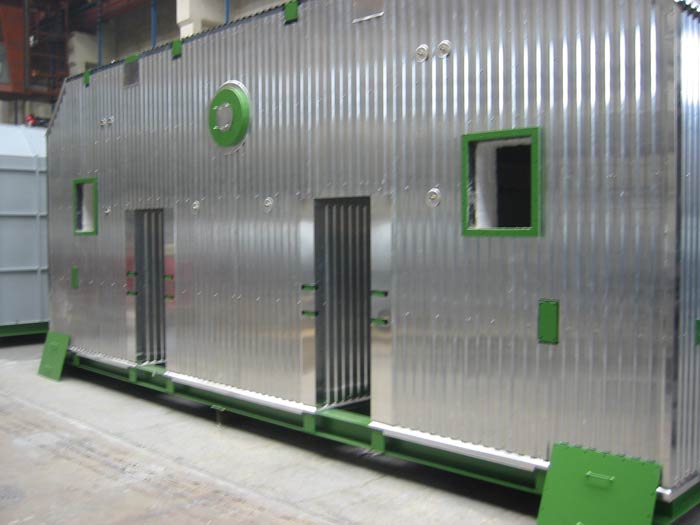Regenerative thermal oxidation
- Regenerative Thermal Oxidation is a process based on direct after-burning of organic and inorganic pollutants in the waste gas.
- Our devices are suitable for the processing of 10.000 to180.000 Nm3 of waste gas per hour.
- The trade name of the device is RTNV ENVITERM.
Our oxidizers have a heat-exchange system directly embedded in them. They offer a perfect economic combination of heat recovery and the cleaning of the waste gas.
Our regenerative oxidizers consist of three or five reactor chambers which gradually switch from the heat accumulation phase to the heat exchange phase and to the air cleaning phase. This method allows us to accumulate the energy from the waste gas in the ceramic components of the thermal regenerator and after the flow is changed the accumulated heat is passed to the incoming waste gas. Above the ceramic components there is a combustion space where the carbon monoxide and the organic carbon are at their oxidation temperature turned into carbon dioxide and water. The cleaned gas can then be let out in the air.
The heat exchange effectiveness is a minimum 95% so the incoming waste gas is heated up almost to the oxidizing temperature. It is then heated to the required temperature of 750o C to 850o C in the combustion space by an auxiliary burner. If the concentration of the burnable compounds in the gas is high enough the energy gained by burning these compounds can be used for heating of the gas.
Three chambers are the minimum necessary for a continual operation. The first chamber accumulates heat, the second chamber passes the heat to the incoming waste gas while the third chamber is cleaned by the clean air. The function of the chambers is switched automatically using a system of valves. The device works in a parallel process to reach the maximum cost effectiveness. It is possible to place the device inside a building.
The oxidizer can be equipped with a hot bypass. The hot bypass is suitable for processes where the concentration of the organic carbon and the carbon monoxide exceeds 5 g/Nm3. It helps using the extra heat. When the concentration of organic carbon and carbon monoxide is high enough and the oxidizer is working in an auto-thermal process the hot bypass opens which drives part of the heat away from the combustion space. Using a special heat-exchanger the heat can be used in a different process.











